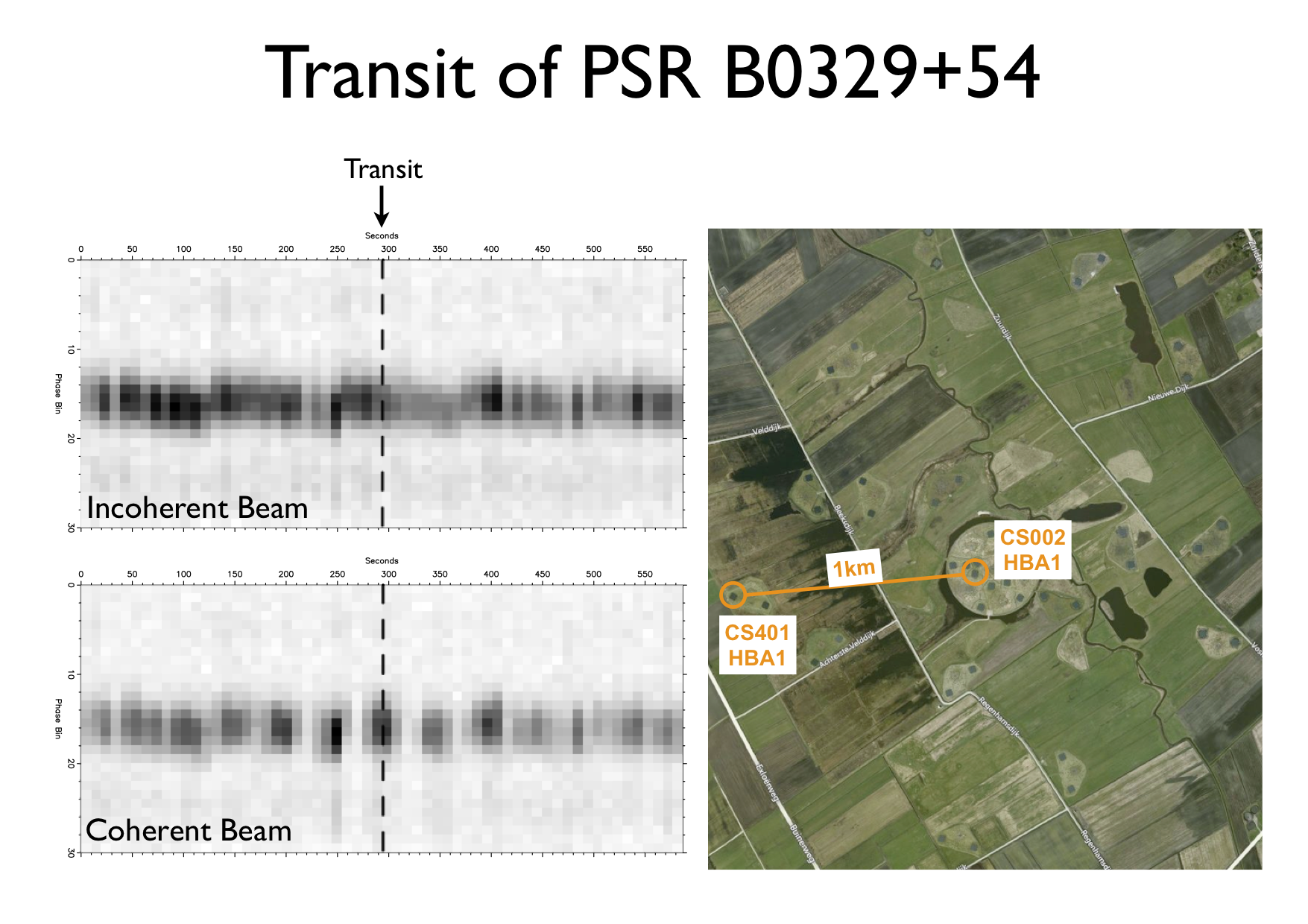Daily Image
27-06-2012First the Core, then the World
| Submitter: | Jason Hessels, Vlad Kondratiev, and Michiel Brentjens |
| Description: | For over a year, we have been forming tied-array beams with the LOFAR Superterp stations (previous AJDI). Given the success of these observations, it was decided to expand the current 'Single Clock System' to all 24 Core stations. This requires installing a new hardware board at each of these stations. In addition to accepting the central clock signal, these boards also solve the current PPS syncing problem that has plagued a number of stations. Before ordering the full complement of new hardware, we have tested one new board on station CS401 in order to ensure its performance. We chose CS401 because it forms a roughly 1-km East-West baseline with the Superterp and is thus conducive to drift-scan observations. This Daily Image shows the brightness of pulsar B0329+54 as it transits through the simultaneously acquired incoherent and coherent beams formed from the combination of CS002 and CS401 (using one HBA sub-station each). Though the brightness fluctuations are often dominated by the intrinsic pulse-to-pulse variability of B0329+54, one can also clearly see the source passing through the expected fan-beam pattern of the coherent combination. We expect the coherent beam between CS002 and CS401 to have a main-lobe width of roughly 5 arcminutes, and indeed the pulsar passes through this in ~20 seconds. If all goes according to plan, the full core will be connected to the Single Clock System by this fall, at which time the point source sensitivity of the tied-array mode will quadruple from the GBT-like sensitivity we currently have with the Superterp to an Arecibo-like sensitivity! Many thanks go to Gijs Schoonderbeek, Menno Norden and others for engineering and installing this system. |
| Copyright: | JWTH/BING |
| Tweet |  |
